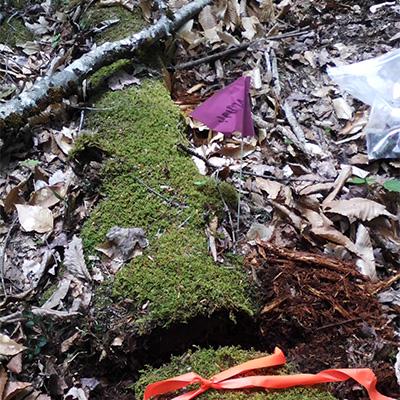Nitrogen Controls on Detrital Organic Matter Dynamics in the Northern Forest: Evidence From a 26-Year Nitrogen Addition Experiment at the Bear Brook Watershed in Maine

Forest carbon dynamics are tied to ecosystem nitrogen cycling through the role of nitrogen in organic matter decomposition and plant productivity. As leaf litter decomposes, it accumulates nitrogen. Previous studies in the northeastern U.S. showed that experimental nitrogen additions lead to an increase in forest floor carbon, presumably because of slower soil organic matter decomposition. Moreover, high nitrogen availability decreases the activity of soil fungi in decaying recalcitrant leaf litter. However, it is not known whether the effect of high ecosystem nitrogen status holds true for woody debris decomposition and associated contribution to soil carbon sequestration.
NSRC researchers conducted a study at the Bear Brook Watershed in Maine, a long-term experimental site with a treated watershed that received nitrogen additions for 26 years and a reference, or control, watershed that did not receive additional nitrogen. Researchers investigated the effect of ecosystem nitrogen status on carbon and nitrogen storage in coarse and fine woody debris in the two different ecosystems. They also compared sugar maple and red spruce wood decay stake decomposition which is ongoing because little evidence of decomposition existed during the timeline of this study.
Although both coarse and fine woody debris at the study site were important carbon and nitrogen pools, researchers found little evidence of greater carbon or nitrogen pools in woody debris under elevated nitrogen status. This study assessed fine woody debris and buried wood, forest components often overlooked in forest and soil inventories. Woody debris deserves increased inventory efforts for purposes of forest carbon accounting and for biogeochemical studies in a changing climate.
